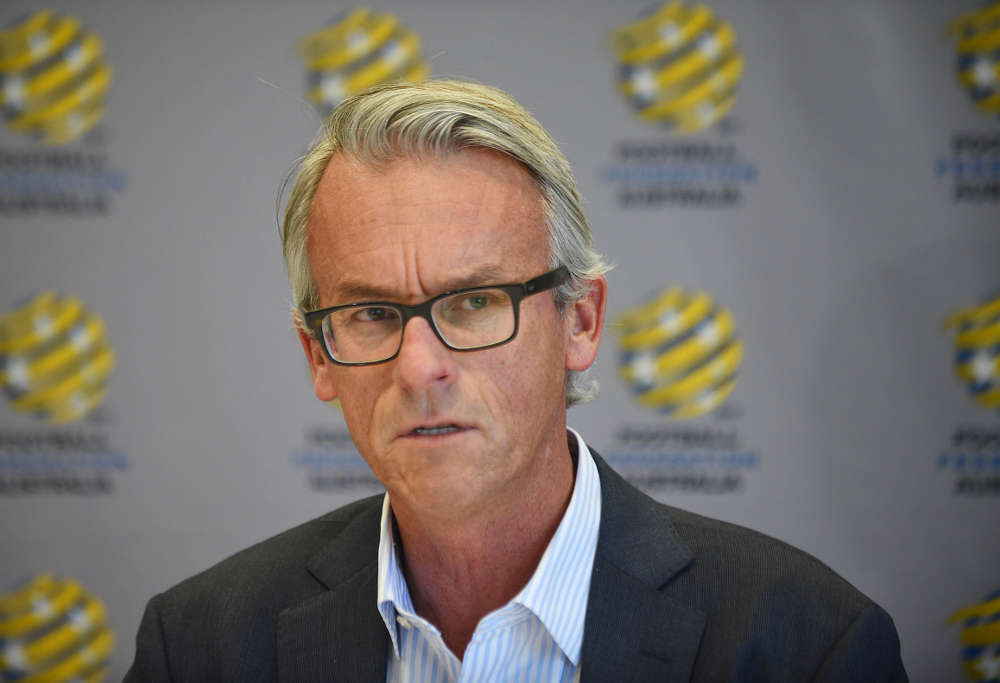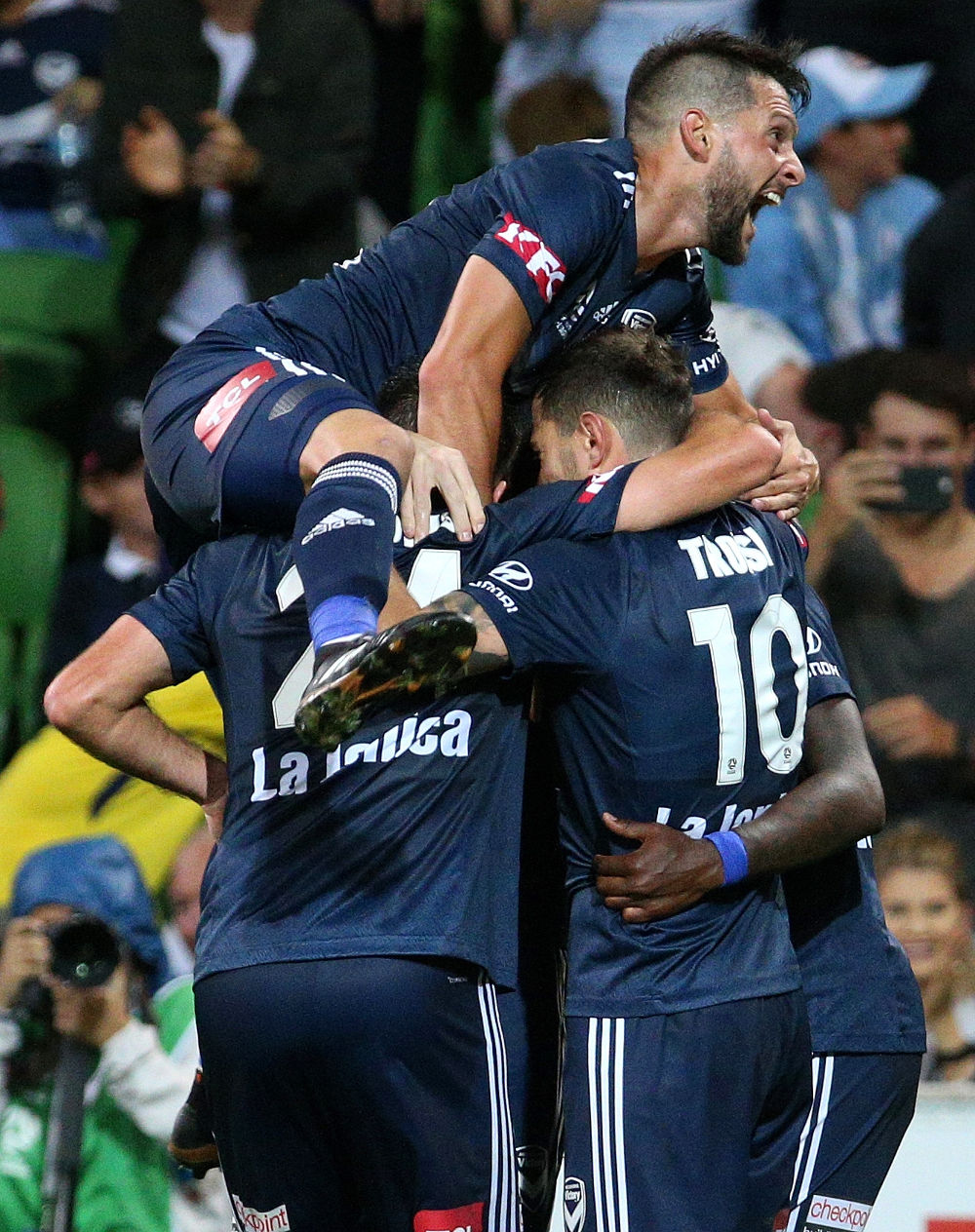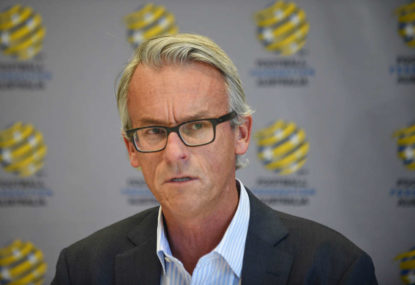I have a theory. One for which I am prepared to be shot down in flames. It’s a line of thinking that others might find obvious and logical.
The recent extension of David Gallop’s tenure at the FFA has ruffled feathers. The Chief Executive’s essential failings appear to be a limited understanding of football culture and an unwillingness or reluctance to expand the game in order to grow it.
While easier than it sounds, the FFA continues to throw out well researched graphs, metrics and other data at the footballing populous, citing a lack of money and unconducive circumstances that have delayed expansion and growth.
The figures can’t be questioned, perhaps interpreted, yet numbers aren’t everything and what the FFA don’t truly understand is an aesthetic.
The key to growth is local, human and passionate; not numerical.
If they want proof, they should look at their own competition; the FFA Cup.
Whether it be smaller suburban grounds with only moderate lighting, souvlaki smoke drifting across the pitch enticing everyone to have another or local communities coming together to barrack for a team that is in their blood, the Cup is special.

(AFP PHOTO / Peter PARKS)
Sure it copped cynicism early on but it will grow and flourish in time and offers an immeasurable aesthetic that no set of numbers can convey.
It marries with the increasing popularity of the NPL competitions that are experiencing something of a resurgence in interest. The buzz at the recent launch of the NPL season at Ultra Football in Sydney, where Adam Peacock hosted a slick event, was obvious.
Listening to the players from recently promoted teams speak about their prospects, engaging in some reflection on the season just passed and chatting with some of the young boys I have been involved with in football now playing at the top level, made for a great day.
It is the connection that was present in the room and the feeling and emotions felt by all involved that lies at the heart of the FFA’s misconceptions about growing football in Australia.
There are many ways to support football and three distinct types of fans exist in this country, approaching the game from vastly different perspectives.
There is the A-League fan whose football diet is the local competition that was born in 2005-06. Many of this mind, particularly the younger fans, are unable to remember the glorious NSL Championship days. Others, without local team allegiance, merely yearned for a national competition that could be embraced by all Australians.
Secondly, there is my greengrocer Con. The man who still talks about Peter Katholos and is prone to burst into an Ol-ym-pic chant at any moment. Con exists across the country in different forms. Croatians, Italians, Maltese and Greek migrants built football in Australia and their passions burn as strongly as ever.
The interesting thing about Con, is that he is far more likely to be standing on a terrace at a suburban ground than soaking up the atmosphere at an A-League game. His type are inextricably connected to their team and will support them to the hilt, it just so happens that their team is in the NPL competition.
It is these two basic groups of supporters, if connected, that are key to growing the game.
There is one other group however, a group that will only play a role in the local game when its full development has taken place.
I speak, of course, of the Euro-snob; those snooty elitists who only watch the best of the best, the cream of the crop and not the substandard joke that is the A-League.
They have little role to play in Australian football right now but when the bandwagon has arrived, they will be leaping on board in their Liverpool, Man U and Messi kits with gay abandon. We will welcome them then.
As for now, there is plenty at stake and the two important groups outlined above are the avenues through which progress can take place. What David Gallop doesn’t understand and seems unwilling to learn is that a connection between the two is the key to taking football into a new place.

(AAP Image/Hamish Blair)
A youthful A-League fan with little or no awareness of the history of the NSL, sees the Wollongong Wolves, South Melbourne and Apia-Leichhardt as NPL teams only, unaware of the considerable support they still elicit and the proud history they possess.
The FFA Cup has gone some way to educating them of the wonderful fabric of the smaller foundational clubs across the nation yet a true connection to the top tier remains loose at best.
Contrastingly, many of those fans still embracing local community-based teams feel alienated from and disinterested in A-League clubs who, they believe, offer little in terms of personal connection and history.
This is a natural by-product of the establishment of a new league, with mostly start-up teams and little or no history of which to speak. Many stayed loyal to their community based clubs and while taking a passing interest, never truly embraced the A-League.
[latest_videos_strip category=“football” name=“Football”]
Therein lies the challenge for administrators. Connecting the two groups, with A-League fans learning the contributions made by the traditional clubs, who in turn, become more invested in the national competition.
How could this be done? Well, Gallop could continue the small talk with state associations and waffle his way through the next few years, promising much and delivering nothing.
Alternatively, he could use his noggin for once and see the way a truly national structure with effective promotion and relegation would bring the game under a uniformed umbrella for the benefit of all.
The two competitions will never be united and working together to push Australian football forward until they are playing with, against and for each other. It is the source of the power of major international Leagues where individual players and teams step up flight by flight before reaching the pinnacle.
It is called development, where our entire football community watches each other participate and we all share in the successes and failures.
It is a reflection of the global nature of the game where thinking must be broad, visionary and not based purely on big money television deals and limited colonial parameters.
Once we get it right, we will gladly welcome the third group to add the cherry on the top.































































































